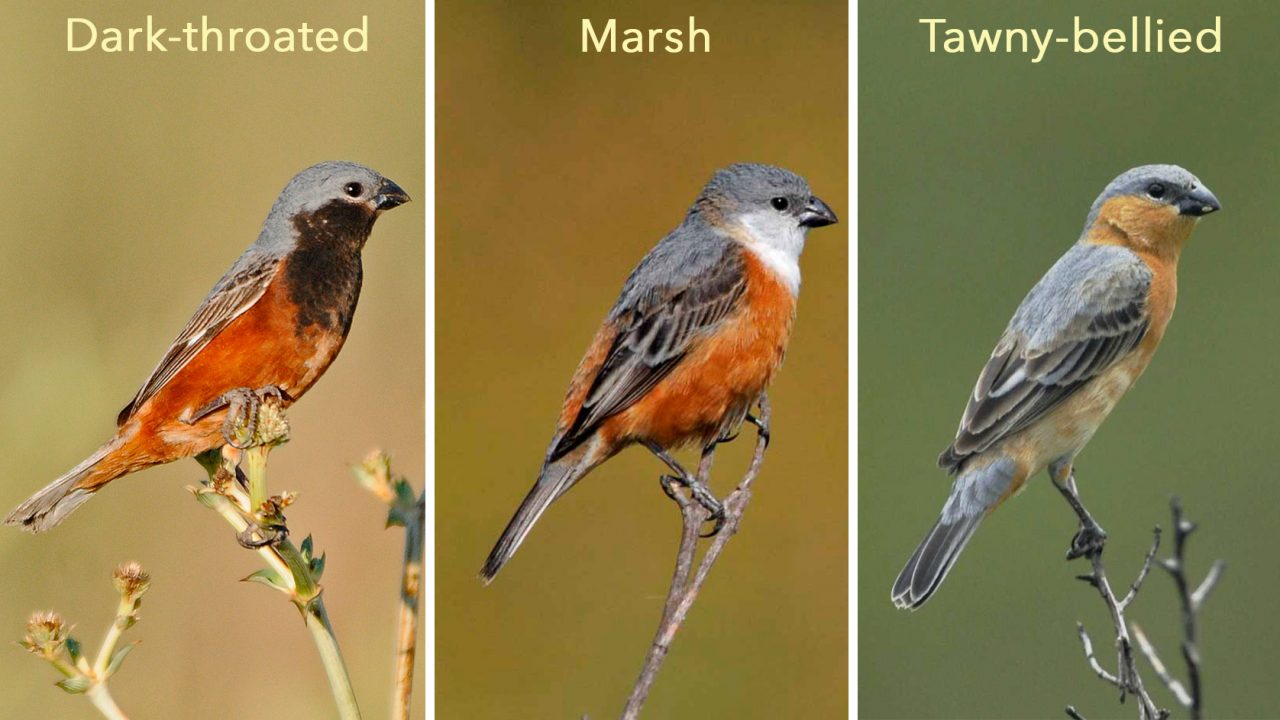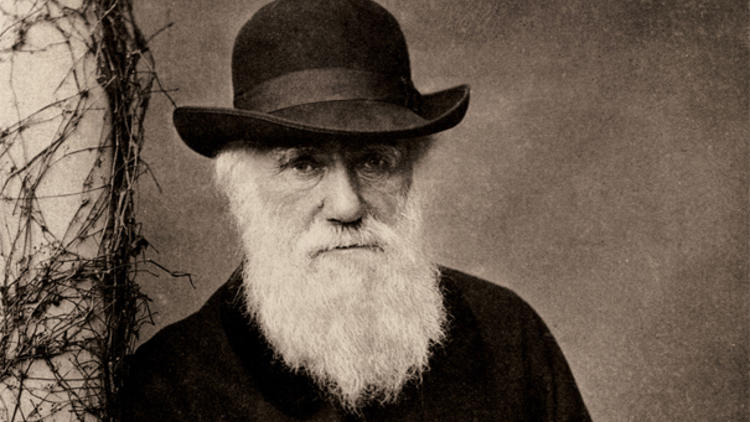WHAT IS EVOLUTION?
Evolution is the developement of life on Earth. This is a phase that began billions of years
ago and still continuing even to this day. Evolution tells us how it is possible for the enormous
diversity of species to develop. It shows us how Primitive Unicellular Organisms could become
the millions of different species that we are lucky to see today. Evolutions is the answer
to the question that we, humans asked when we saw two birds which are far different and in
the same time so similar to each other. How it is possible for ancestors to have descendants
that look so different from them? For the answer, we should focus on animals, excluding fungi
or plants. The first question comes up to our mind is: How can one animal develop to a whole new
type of species?
 Male capuchino finches have brightly contrasting colors that
Male capuchino finches have brightly contrasting colors that
identify their species, as with the throat patches in these 3 species.
Despite these differences,
their DNA is extremely similar. Photos by Márcio Repenning.
WHAT IS A SPECIES?
A species is a group of animals which are capable of producing offspring with eachother, also
those offspring being capable of reproducing in turn. The uniqueness of living organisms guaranteed
through the excess production of offspring and as a second point selection.
A) UNIQUENESS:
Every creature that exists is unique and this is essential for evolution. The members of
a species may strongly resemble each other in appearance however they all have slightly different
traits and characteristics. They may be a bit fatter, stronger or aggressive than other fellow
animals. So what is the reason for these? Every creature is made up of cells and these cells
have a nucleus. Nucleus contains chromosomes and the chromosomes contain the DNA. DNA consists
of genes and genes are life’s information carriers. They contain orders of cells and determine
the characteristics of living creatures have and this DNA is unique to every creature. It’s
slightly different from individual to individual which is why we have different characteristics.
Key factor of this is excess reproduction. In nature we observe that creatures produce more
than needed for the survival of their species, with many offspring dying an early death as a result.
Sometimes there are even more offspring than the environment is able to support. This is a factor
in increasing diversity within species. More offspring mean more little differences occur and this
is what nature wants, as many little differences as possible.
B) HEREDITY:
Recombination is the random mixing of DNA of two creatures. When two creatures mate
they recombine their genes twice. The first time they do this is when they generate gametes
(sperm and egg cell). The gametes take half of the genes and shuffle them. The second recombination
occur when a male inseminates a female. The parents provide 50% of their DNA, in other words 50%
of their unique characteristics. These are then recombined and form a new offspring. These
offspring have a random mix of the DNA and therefore the traits of their parents. This increases
the diversity and differences within species even further.
C) MUTATIONS:
Mutations are random changes in DNA. They are triggered by toxins or other chemical
substances or by radiation. A mutation exists when a part of DNA is altered. These changes
are often negative and may result as an illness. But they may also have positive effects, such
as the blue eye color in humans, which is one such random mutation. In all cases, mutation has to affect
the gamete because only the DNA in the gametes are passed to the offspring. This is the reason
why we protect our sexual organs during x-rays while other parts of our body are not at risk.

IS IT REALLY RANDOM?
Believe or not, all of these processes are based on chance. Random recombination and mutation
result in individuals with random mixes of characteristics which then turn mix these randomly
and pass them on. But how can so much be down when all living organisms are adapted to the
environment. For example Stick Insect (Phasmatodea), Humming Bird (Trochilidae) or the Frog Fish
(Antennariidae)? The answer is, selection. Each individual is subjected to a process of Natural
Selection. Environmental influences have an effect on organisms. These selection factors
include:
a)Predators
b)Parasites
c)Toxins
d)Changes In Habitat
e)Same Species
f)Climate
The unique mix of traits helps individuals to survive in their environment or not. Anyone with
an unsuitable mix will be selected by the nature. Those with right mix or we can call them
adapted species survive and can pass their characteristics now on. This is why diversity is
important. This is why creatures make so much effort to produce offspring that are different as
possible. They try to increase their chance to pass nature’s selection process. A good example
of this can be seen in a community of finches living on an island. They are known as Darwin
Finches after their discoverer Charles Darwin. A few hundred years ago, a small group
of finches was blown onto the Galapagos Islands in the the Pacific. The finches found themselves
in a completely new environment to them. A paradise for them actually, a generous
amount of food and no predators. They reproduced rapidly and soon the islands were heaving
with finches. This means the food was increasingly scarce. The finch paradise soon threatened with famine
and finches became competitors. This is when selection took place. Their individuality and small
differences in this case their beaks meant some of the birds were able to avoid competing with other
finches. Some of the beaks were more capable for digging worms. Other ones were able to
use their beaks for cracking the seeds. They began to mate primarily with other finches which
has the same niche and many generation they enchanced their characteristics in order to enabling
the finches to exploit niches successfully. The differences between worm diggers and seed crackers
became so large that they were no longer able to mate with each other and this lead to a new species
as a result. Today there are 14 different species of finch on the Galapagos Islands, this is how
new species are created by evolution: through interaction of unique individuals, the excess
production of offspring, recombination and mutation in heredity and through selection.

WHY IT IS SO IMPORTANT?
It tells us where the variety of life comes from and why organism are so perfectly adapted to
their habitats. But it also effects us personally. Every person around you is a result of 3.5 billion
years of evolution and that includes you. Your ancestors fought and apated to survive. If you
ever thought you are not successful or you don’t have any part in the society you should
consider that 99% of all the species that have ever lived are extinct so you can consider yourself
as a part of a success story. The big, strong dinosaurs have disappeared from the Earth but
you are alive. Because you’re special, just like all the other creatures that exist today, irreplaceable
and unique in the universe.
“It is not the strongest of the species that survives, nor the most intelligent that survives.
It is the one that is most adaptable to change.”
-Charles Darwin

